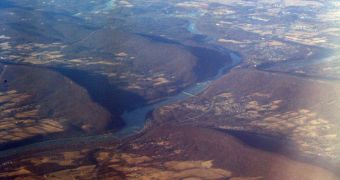New investigations conducted by the United States Geological Survey (USGS) show that the conservation and restoration efforts that have been put into the Potomac River are beginning to pay off.
The team shows that multiple benefits are starting to become visible in the body of water, which passes through the nation's capital city of Washington, DC.
Some of the main actions took for increasing the quality of water in the river included reducing the amount of nutrients that make their way into the river, as well as improving water clarity as a whole.
This led to an increased abundance and diversity of submerged aquatic vegetation (SAV) in the Potomac River. The data belongs to a field study spanning more than 18 years.
Over the past 20 years, experts say that the lower Potomac SAV-covered area has more than doubled in size. This is a direct consequence of the restoration efforts, the USGS crew says.
It was additionally discovered that the area of the river which was natively inhabited by SAV increased ten times over, which is a massive improvement from 1990 levels.
The USGS research also showed that the number of exotic species living in the river has decreased considerably, given the reduction in the amount of nutrients running off into its waters.
But native biodiversity increased considerably as exotic species were pushed back, the team says. The experts collaborated with colleagues from the National Oceanography Center (NOC), in the UK.
“Improvements to plant communities living at the bottom of the river have occurred nearly in lock step with decreases in nutrients and sediment in the water and incremental reductions in nitrogen effluent entering the river from the wastewater treatment plant for the Washington DC area,” reveals Dr. Nancy Rybicki.
She is a scientist with the USGS. “People want to know that money spent on ecosystem restoration is having tangible results, but many feel that efforts to clean up Chesapeake Bay have so far had limited success,” NOC researcher Dr Henry Ruhl adds.
“Upgrades to the wastewater treatment plant have benefited SAV habitats 50-miles downstream. These findings underscore the benefits of nutrient reduction efforts on a major tributary to the Chesapeake Bay,” Rybicki adds.
The expert has been conducting research on the Potomac river and basin since 1979.
This investigation was supported by the USGS National Research Program; the US Army Corps of Engineers in Baltimore, the Metropolitan Washington Council of Government’s Aquatic Plant Management Program, and the Fisheries Division of the District of Columbia Department of Health.

 14 DAY TRIAL //
14 DAY TRIAL //